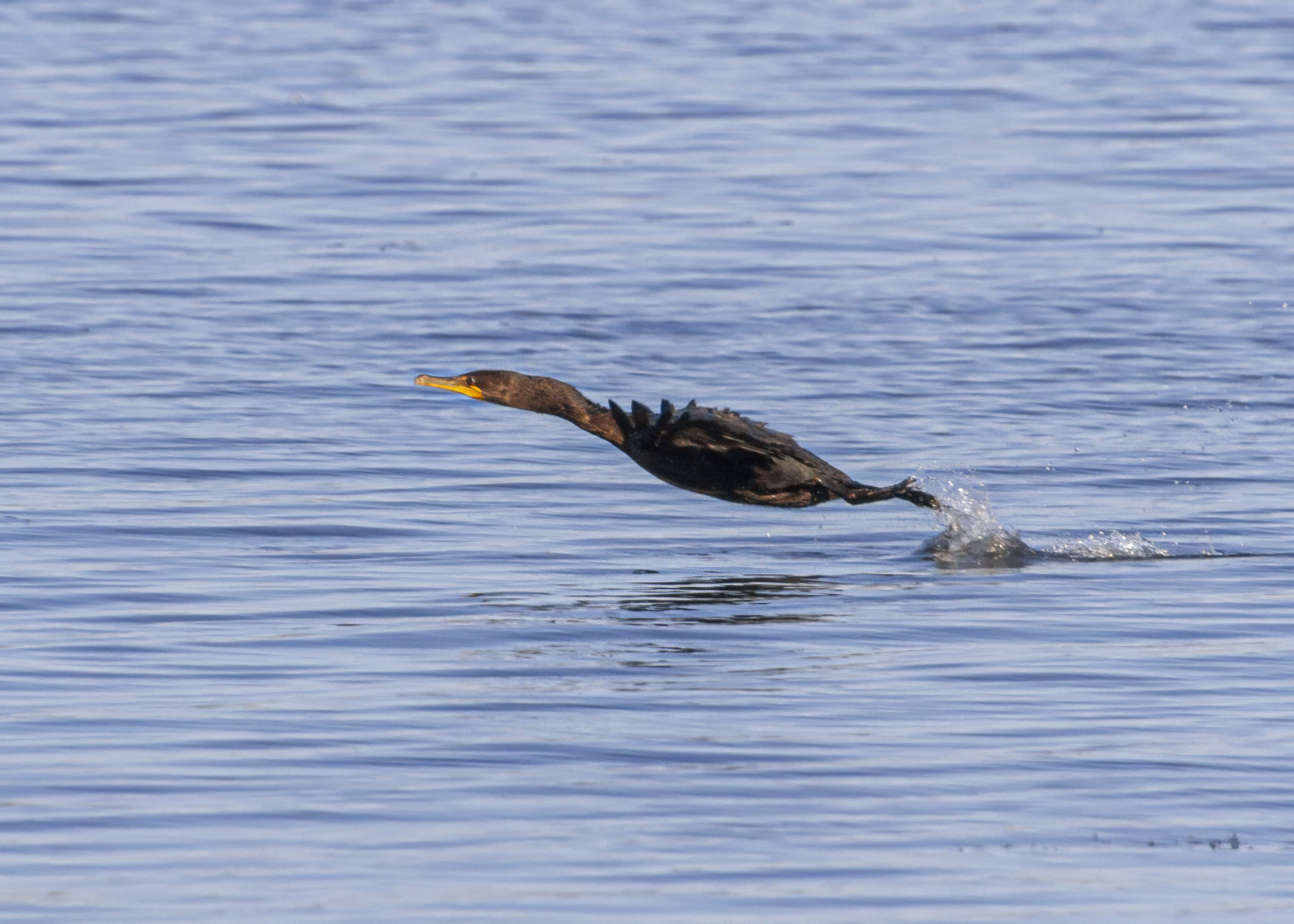Double-crested Cormorants (Phalacrocorax auritus) are very skittish and usually take off as soon as they detect my presence. As soon as I spotted one in the distance last week in the waters off of Occoquan Bay National Wildlife Refuge, I immediately focused on it, anticipating its imminent takeoff. My instincts were correct and I shot off a burst of photos as the cormorant took to the air.
Unlike some other species, cormorants do not rise straight out of the water. Instead they bounce across the surface to generate some momentum before they lift off. The three photos below show the beginning of the takeoff sequence, as the cormorant flapped its wings and started to gain speed. Although I was pretty far away, I managed to capture the orange face of the cormorant, which really stands out against the choppy blue water in the background.
© Michael Q. Powell. All rights reserved.





























